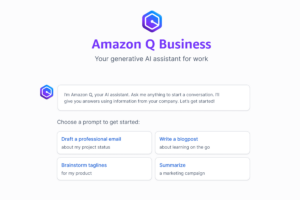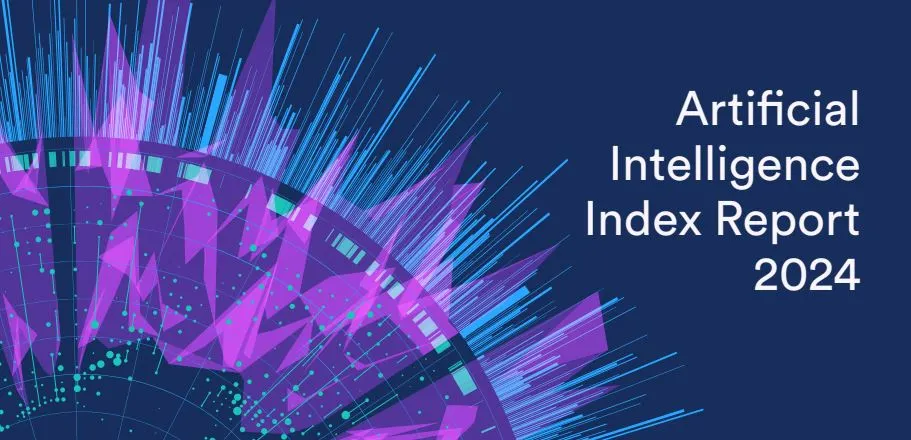
Introduction
The AI landscape is constantly changing. The release of the AI Index Report 2024 is a significant milestone. As we explore the report, we’ll break it down and analyze its contents. This breakdown will provide insight into the current state and future direction of artificial intelligence.
What is the AI Index Report?
The AI Index Report is an initiative of Stanford University’s Institute for Human-Centered Artificial Intelligence (HAI). It’s a comprehensive compendium that measures and evaluates the rapid rate of AI advancement. Covering research and development, technical performance, ethics, the economy, education, AI policy, governance, diversity, public opinion, and more, the report is a critical resource. It offers valuable insights for anyone seeking to understand the current state of AI.
This year’s edition is touted as the most extensive yet. It features more original data than ever before, including new estimates on AI training costs. Detailed analyses of the responsible AI landscape, and an entirely new chapter dedicated to AI’s impact on science and medicine.
1. Research And Development
In the Artificial Intelligence Index Report 2024, Chapter 1 goes into key developments in research and development within the AI landscape. It highlights the dominance of industry in producing notable machine learning models, with a significant increase in industry-academia collaborations.
The report highlights the United States as the primary source of top AI models. It surpasses China, the EU, and the U.K. Additionally, there’s a substantial increase in AI patent grants globally. China emerges as a dominant force in AI patents.

Open-source AI research experiences explosive growth. This is reflected in the surge of AI-related projects on GitHub and an increase in AI-related publications. Overall, the report showcases the evolving landscape of AI research and development. It’s marked by industry dominance, technological advancements, and global collaboration.
2. AI publications in 2024
The report provides an overview of the global count of English- and Chinese-language. AI publications from 2010 to 2022, categorizing them by affiliation type and cross-sector collaborations. Its key highlights are:
Total Number of AI Publications: The total number of AI publications has nearly tripled from approximately 88,000 in 2010 to over 240,000 in 2022 .
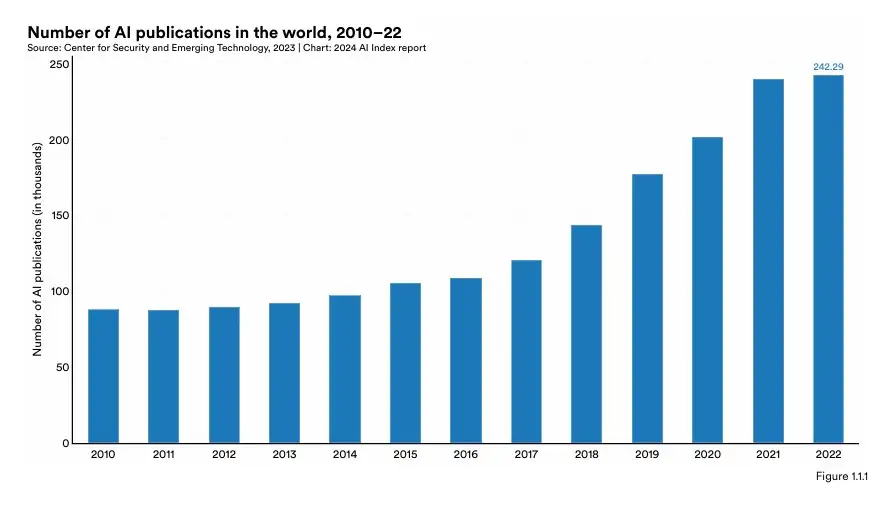
Types of Publications: In 2022, there were roughly 230,000 AI journal articles and around 42,000 conference submissions, showing significant growth in both types of publications since 2015 .
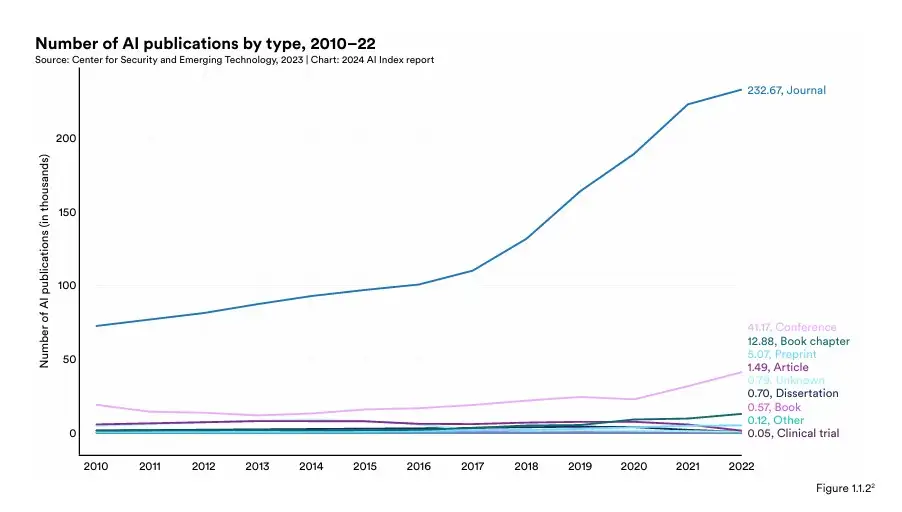
Field of Study: Machine learning publications have experienced rapid growth, increasing nearly sevenfold since 2015. Other highly published AI fields in 2022 include computer vision, pattern recognition, and process management .
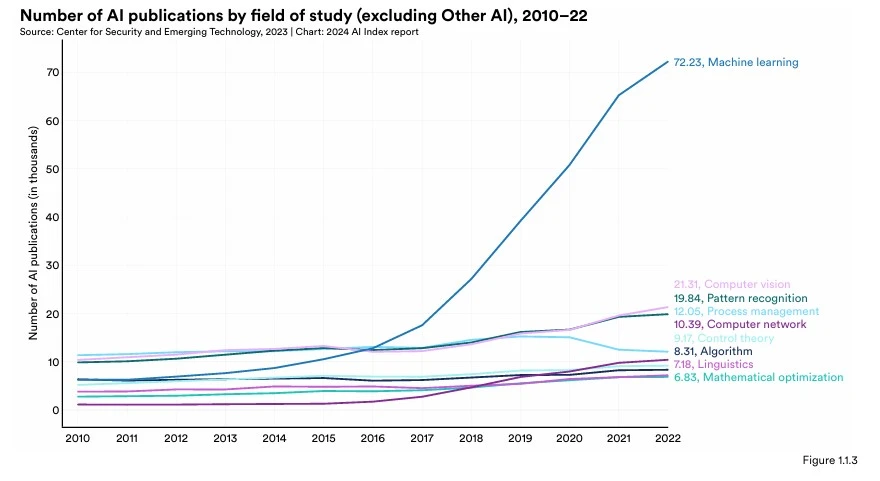
Sector Distribution: The academic sector contributed the majority of AI publications (81.1%) in 2022, maintaining its position as the leading global source of AI research. Industry participation is most significant in the United States, followed by the European Union plus the United Kingdom, and China .
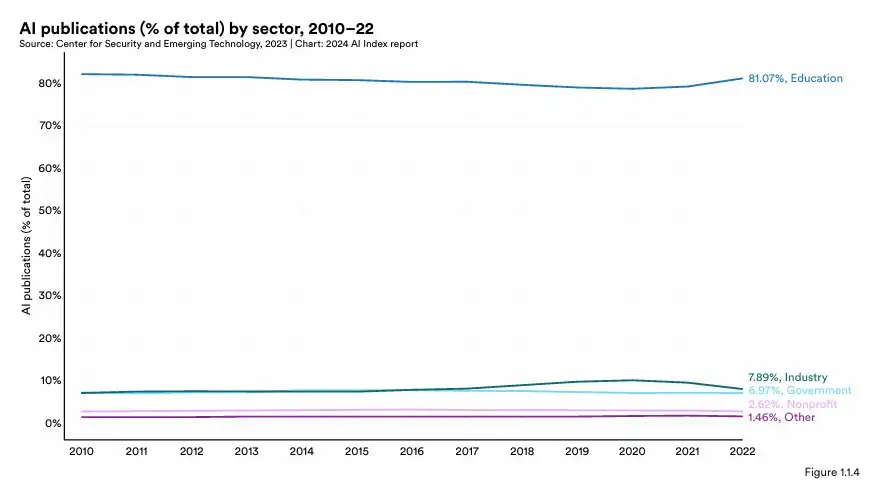
AI Journal Publications: The number of AI journal publications grew approximately 2.4 times since 2015, with a 4.5% increase between 2021 and 2022 .
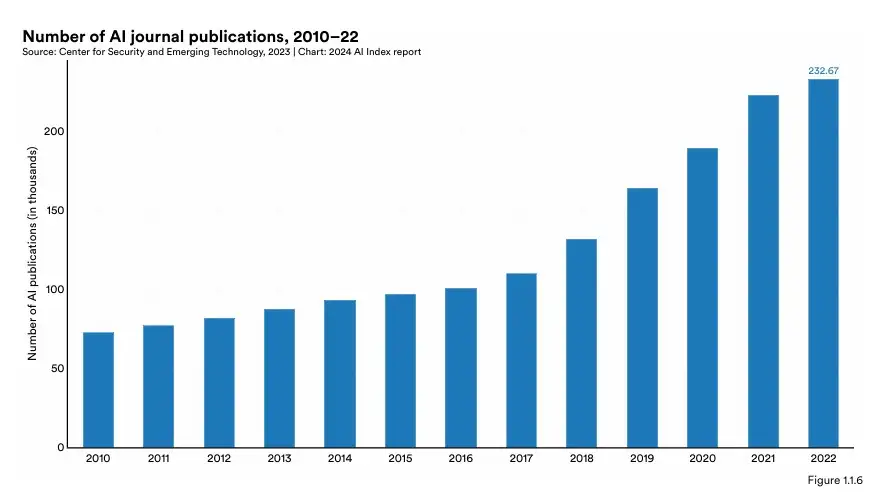
Read More: SK Hynix and TSMC Forge Ahead with 6th Gen HBM (HBM4) by 2026 – techovedas
3. Industry Vs Academia
Industry has demonstrated a stronger presence in producing notable machine learning models compared to academia. There’s been a growing number of collaborative efforts between the two sectors. These collaborations aim to drive innovation in AI research and development. A notable machine learning model is one recognized for its significant impact, innovation, or influence within the AI and machine learning ecosystem. The comparison between industry and academia is as follows:
Industry vs. Academia: In 2023, industry produced 51 notable machine learning models, while academia produced 15 notable models .
Industry-Academia Collaboration: There were 21 notable machine learning models resulting from industry/academic collaborations in 2023, indicating a growing trend of collaboration between these sectors .
Sector Dominance:Until 2014, academia led in the release of machine learning models. However, since then, industry has taken the lead. Recent reports highlight this shift towards increased industrial dominance in leading AI models. They showcase the trend of industry playing a more significant role in producing notable AI models.
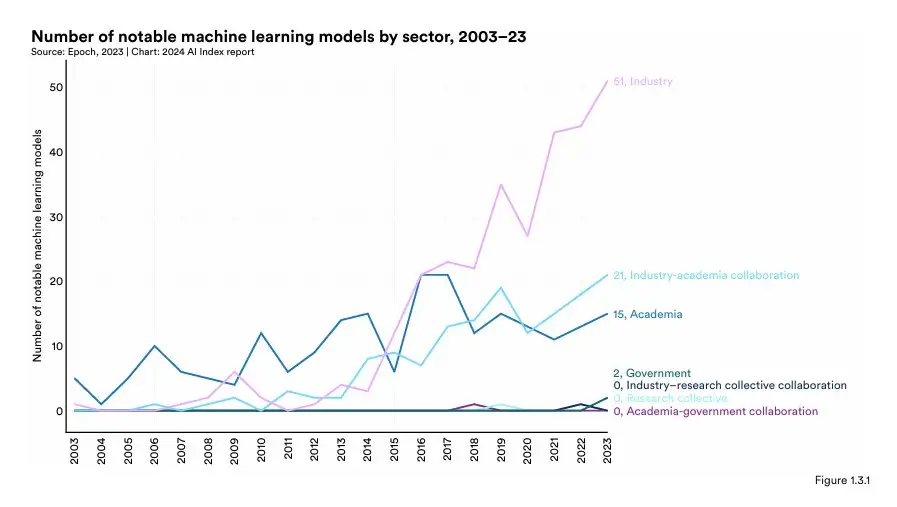
4. Insights From the AI conference
AI conferences serve as essential platforms for individuals to present their research findings, exchange ideas, network with peers, collaborate on projects, and stay updated on the latest trends and advancements in the field of AI.
Analyzing AI conference attendance and open-source AI software projects:
AI Conference Attendance:
- Growth Trends: The data on AI conference attendance reveals a general increase in total attendance over the years. This trend indicates a growing interest in AI research and reflects the expansion of the field.
- Shift to Virtual Formats: The recent shift to virtual or hybrid conference formats has influenced attendance numbers, allowing for higher participation from researchers worldwide. This shift has implications for networking opportunities and knowledge sharing within the AI community.
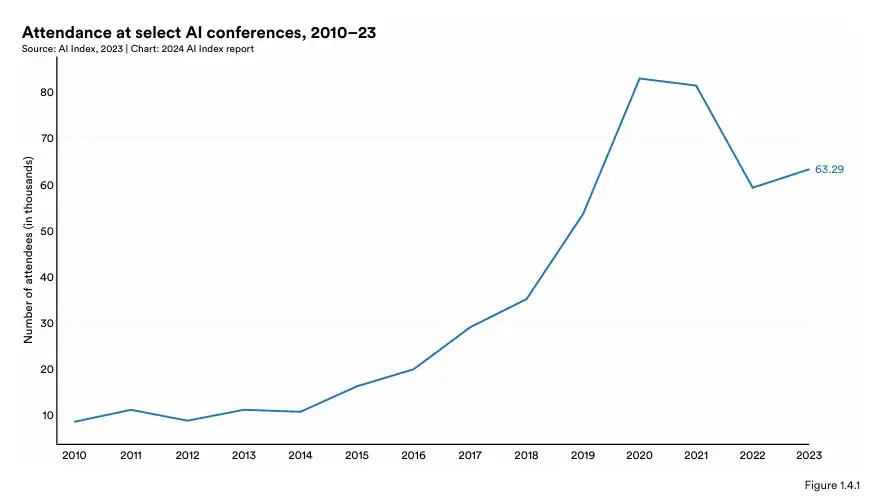
- Open-Source AI Software Projects:
- GitHub Insights: GitHub data provides insights into broader trends in open-source AI software development that may not be fully captured by academic publication data .
- Collaboration and Innovation: Open-source AI projects foster collaboration among developers, researchers, and organizations. This leads to the rapid advancement of AI technologies through shared resources and knowledge.
- Accessibility and Transparency: Open-source projects promote accessibility to AI tools and algorithms, enabling researchers and developers to build upon existing work and contribute to the community. The transparency of open-source projects also enhances trust and reproducibility in AI research.
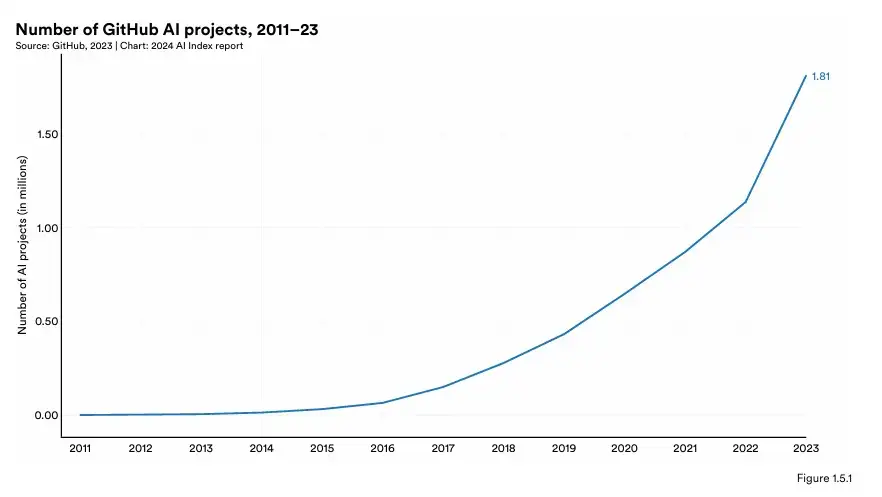
Read More: $190 Million: What is The Cost of Training AI Models from Google to OpenAI – techovedas
Read the report here
Conclusion
The AI Index Report 2024 offers a comprehensive overview of the current state and trends in artificial intelligence research and development. It analyzes various indicators such as AI conference attendance, open-source AI software projects, and notable machine learning models to provide valuable insights into the dynamics shaping the AI landscape. The comparison between industry and academia in producing notable machine learning models highlights collaborative efforts and knowledge exchange driving innovation in AI technologies. Moreover, the examination of AI conference attendance underscores the growing interest and participation within the AI community, reflecting the expanding scope and impact of AI research.



